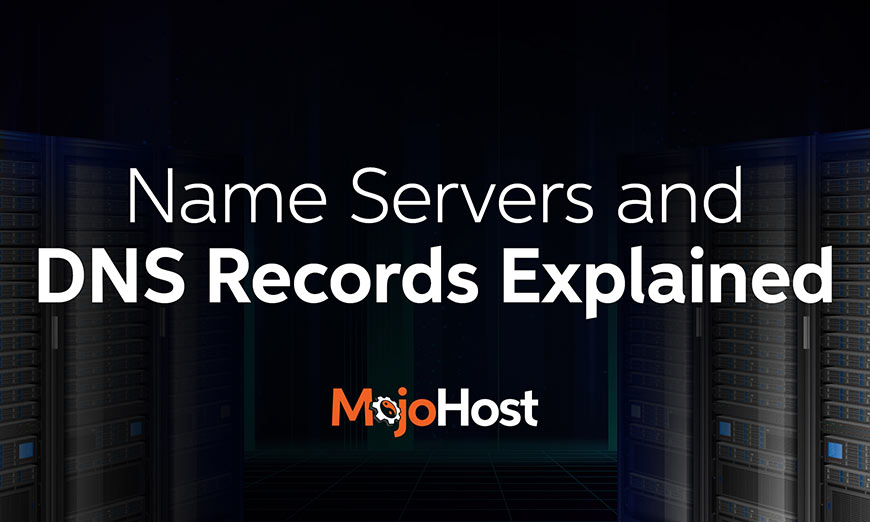Today marks an exciting milestone for MojoHost and the rapidly…

A domain name is a set of letters users type in their browsers when they want to reach a certain webpage. Domain names are easy to understand for humans but rather intricate for computers. Computers prefer numeric data, like typical IP addresses. How to solve this incongruity? With the help of DNS records, of course!
DNS stands for Domain Name System, and it has been the way of the Internet since its inception. For a better understanding, though, it is necessary to give a little bit of attention to Name Servers, as they work in close cooperation with DNS records. When somebody opens their web browser and types a URL into its address bar, there needs to be a mechanism that would connect the entered URL and the web server that powers the website in question.
What’s in a Name Server
Name Servers have a very important role in this process – they connect URLs with IP addresses of web servers in a way that is easy and understandable for human users. Much ado it would be, if we would have to memorize numeric addresses instead of simple and easy-to-remember domain names!
On the surface, nameservers are quite like regular domain names. If your domain is registered and hosted with MojoHost, most probably you will be using
- dnsa.mojohost.com
- dnsb.mojohost.com
- dnsc.mojohost.com
- dnsd.mojohost.com
(or ns1.mojohost.com and ns2.mojohost.com if your domain has been hosted with MojoHost for a long time) as your nameservers.
Their role is different, though, from serving up websites. They help direct web traffic. Here is a real but simplified example of how nameservers play their part.
- We type a URL into the address bar of our web browser
- The browser gets in touch with the nameservers that are associated with the requested domain
- The mentioned nameservers give their answer in the form of the IP address of the server that serves up the website
- Our browser requests content from this IP address and loads the page
As you can see, “There are more things in heaven and earth, Horatio…” The whole process happens behind the scenes while we just enter a URL. We see the page loaded in a matter of seconds.
Uneasy lies the head that manages DNS Records
It is possible to check which nameservers are used by a certain domain. The procedure is quite quick and simple. There are many ways to perform this check including multiple online Whois lookup services. They will show all the nameservers and even more details in just several clicks.
Why is it important to know one’s nameservers? This knowledge is not obligatory but knowing where your domain is registered, where its DNS records are kept, and to what nameserver your domain points may come in handy in certain situations.
Your domain registrar is where you are allowed to edit your domain’s nameservers. If you have registered your domain with MojoHost and plan to have us as your hosting provider, it is safe for you to ignore your nameservers without any ill consequences. Our team of systems administrators will take care of all the configurations.
If a domain is registered somewhere else or is planned to be hosted externally, you may need to change its nameservers (or at least its specific DNS records) to the ones of your hosting provider.
It is important to remember: DNS records can be managed through nameservers. If a domain’s nameservers are changed away from default ones, further management of DNS record changes should be performed on the platform where the nameservers now point.
The wheel has come full circle – from Name servers to DNS records
When explaining what DNS is, it is easiest to envision a phone book or a library where users can find a necessary book. It is a repository of information for which domain.
But since we already know what nameservers are, we can go to a more specific comparison: nameservers are the phone book or the library. DNS records are particular entries in this phone book or library catalogs. You can adjust the records for each of your domains to govern its functionality. You can also direct where requests are sent for a particular purpose. DNS records allow you to assign where a regular web user will be sent when seeking your domain. It also informs where emails would go associated with your domains, and much more. Read more on what DNS records there are for each domain and what they do in this blog post.




